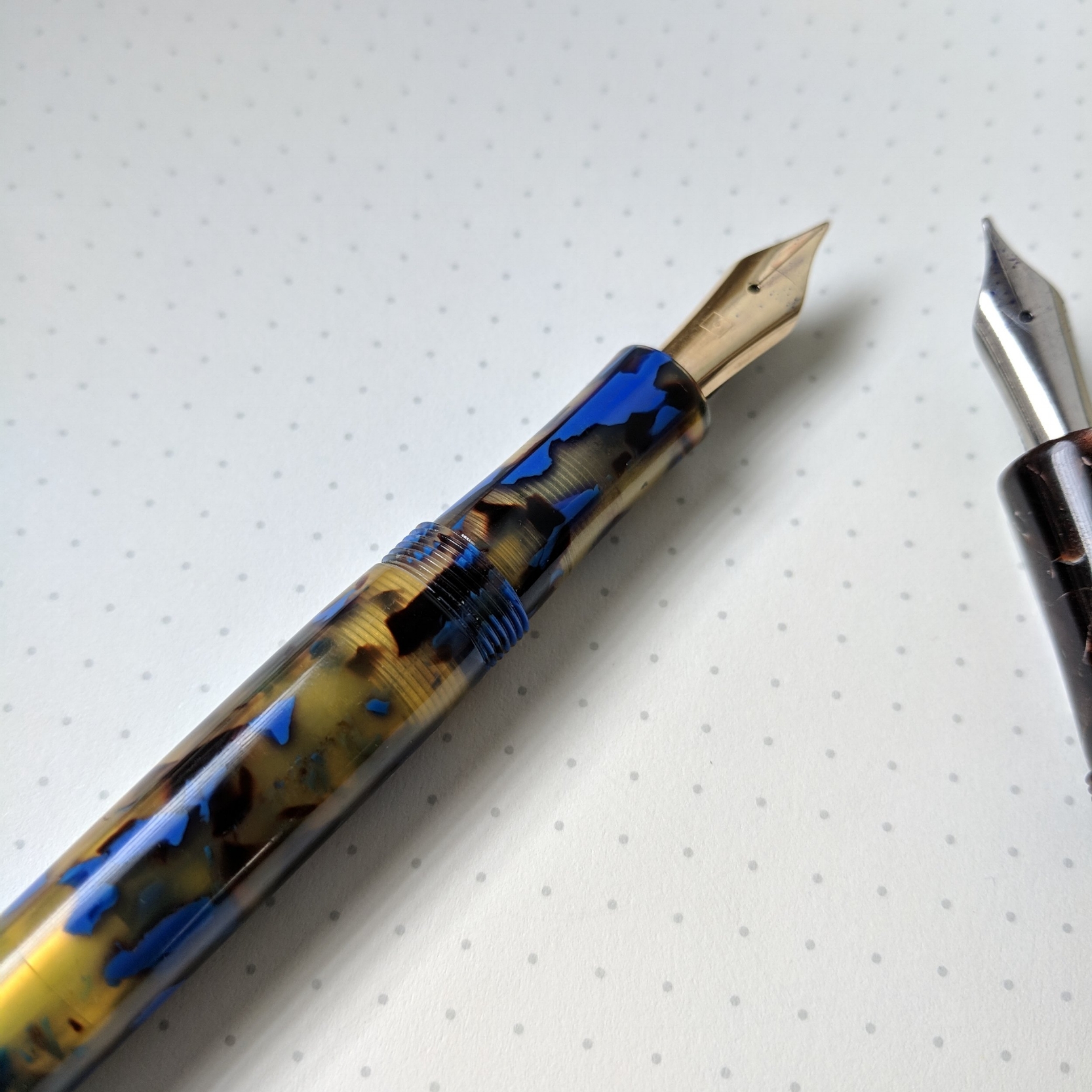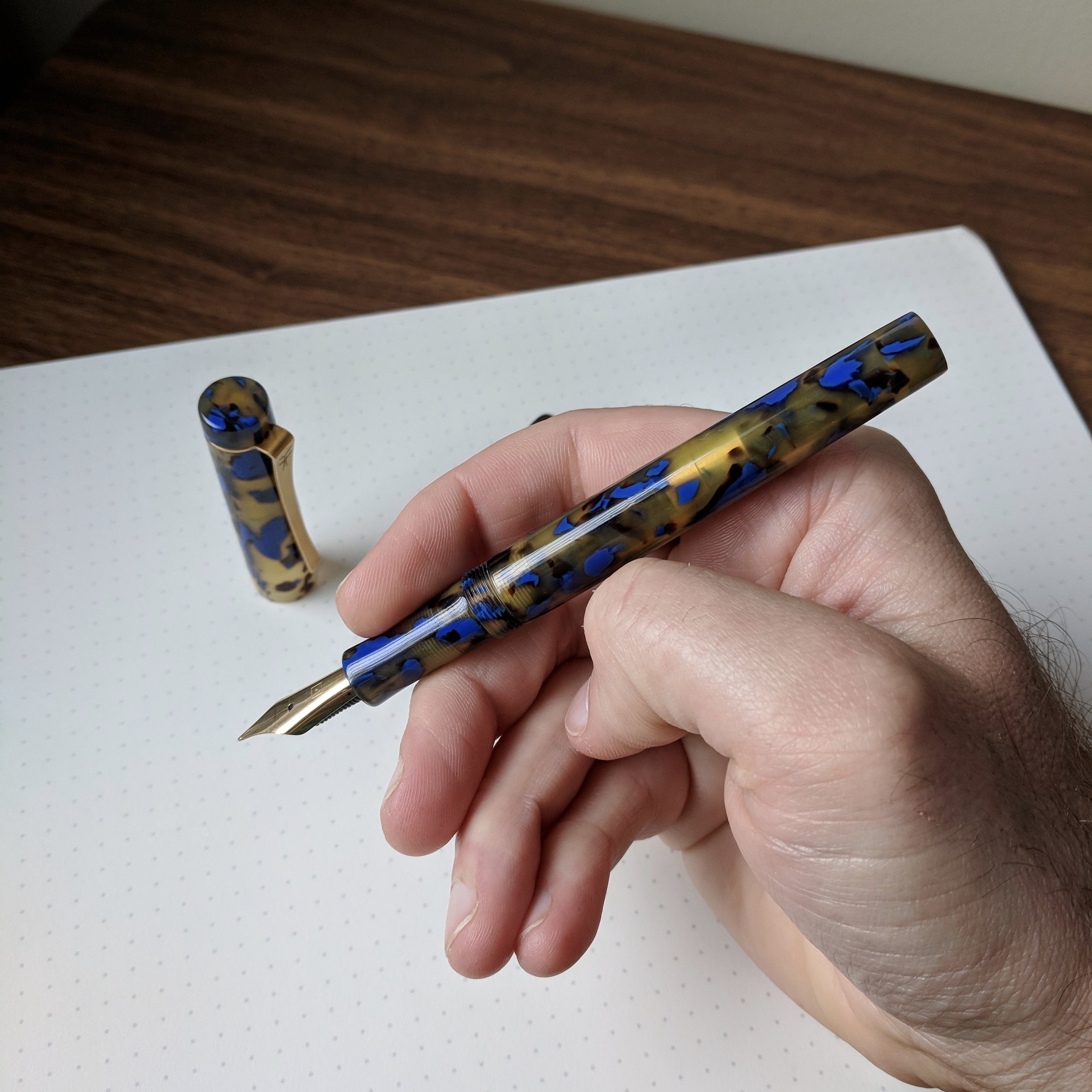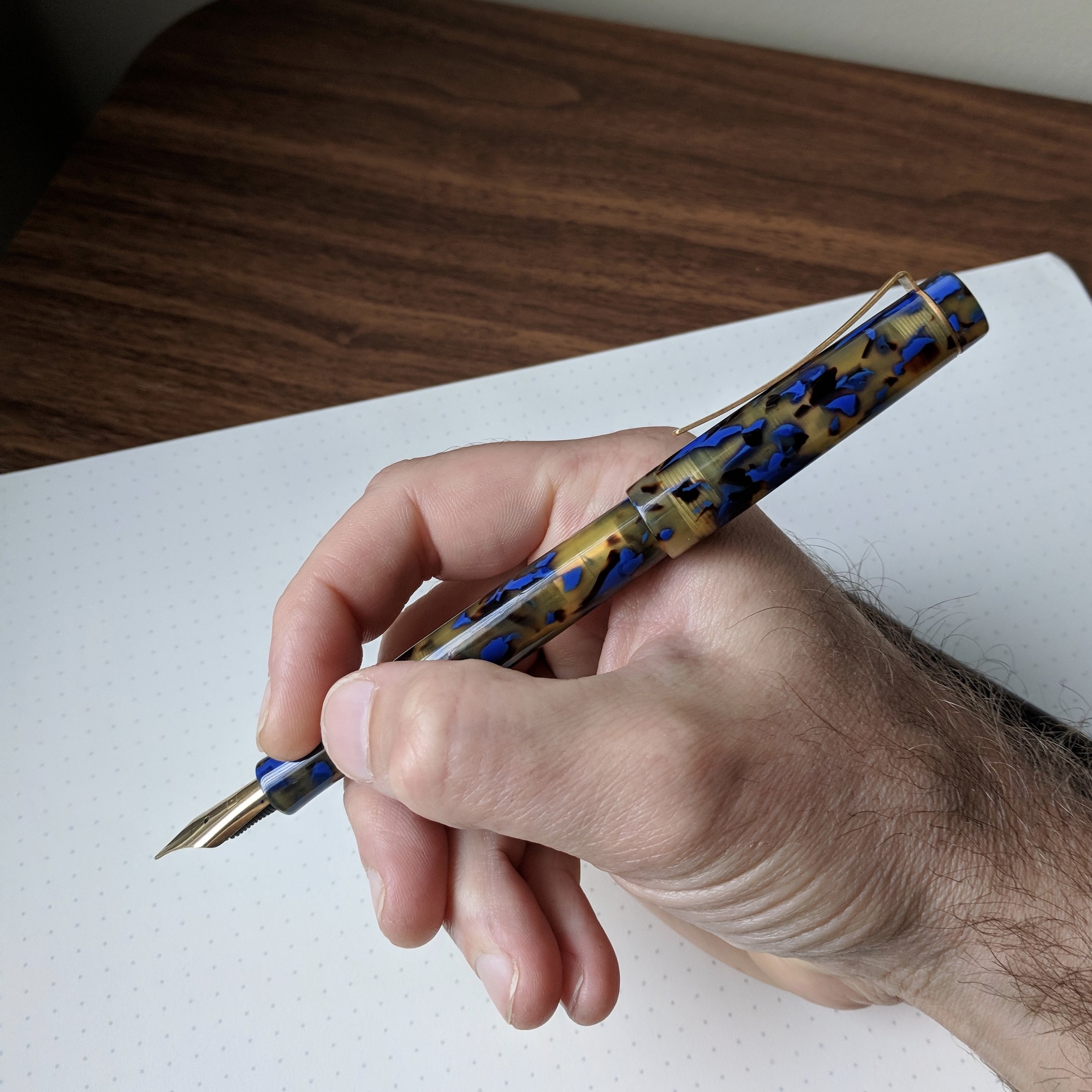Faggionato fountain pens have brought a much-needed refresh to to the market over the past year or so, introducing new designs and materials at a time when a lot of the special edition, limited edition, and “custom” pens out there are starting to feel a bit stale (at least to me). French penmaker Fred Faggionato turns all pens by hand from his workshop in the south of France, and it’s been amazing to see the increasingly diverse array of materials and finishes he’s managed to come up with, including some intricate Japanese-style lacquers.
Faggionato Petrarque in translucent Blue Tortoise. Check out how much that blue in the acetate pops!
What initially drew me to Faggionato pens were the materials, particularly the line made from cellulose acetate, a celluloid derivative. According to Papier Plume, “[t]he colors are obtained from plant fibers processed, dyed, then heated and bonded together with solvents to produce colored blanks. The blanks are stored in a specialized chamber for several weeks to dry them and remove the solvents through evaporation. The blanks are then cut, turned, and polished into pens.” This process differs from that used to make traditional, vintage-style celluloid, which takes many months (if not longer) to cure. The shorter manufacturing time presumably allows Faggionato and others to bring more of these pens to the market at a lower price point, which is always welcome since celluloid pens regularly command prices in the $500-$1000 range, with prices going even higher for rare and unique materials.
Faggionato PKS in vintage Conway Stewart acetate
Blue tortoise Petrarque and "Dartmoor" PKS side-by-side. The simply engraved, curved clip is one of my favorite design elements of these pens.
While Faggionato makes a few different styles, most of the pens that make it to the U.S. come in either the Petrarque or PKS (Petrarque King Size) model. The Petrarque is the slightly shorter, slimmer version that posts, while the PKS is a larger pen. Both feature the same simple, streamlined design and Faggionato’s distinctive curved metal clip.
Showing off the clip curve on the Faggionato Petrarque.
At the end of the day, what makes these excellent pens is the writing experience. Both the Petrarque and PKS have cartridge/converter filling systems, and are therefore lightweight and easy to clean/maintain. The section has a slightly concave hourglass shape, with no step-down from the body, making these some of the more comfortable pens that I’ve used for longer writing sessions.
Faggionato pens feature Bock nibs tuned by the manufacturer. The medium gold-plated steel nib on my Petrarque writes a beautiful wet line, but I did have Mike Masuyama grind the titanium nib on my PKS to a .4mm cursive italic to tame the ink flow a bit - the nib wrote far too wet for my personal preference and everyday paper choice. But that’s not a knock on the pen or the manufacturer, just an issue that I typically have with titanium nibs.
Two Bock nibs: the nib on the Petrarque has a simple engraving, the titanium nib on the PKS has none. I definitely prefer blank or minimally engraved nibs to some of the laser-etching you see on other custom pens at this price point.
Takeaways and Where to Buy
The Faggionato Petrarque and PKS made my mid-year list of favorite products from 2018, and so far, nothing has changed. I love handmade/custom pens that feature unique materials, and in that regard neither of my two Faggionato pen disappoints. If I had to choose between the two, I’d probably prefer the Petrarque simply because it posts and therefore fits into my daily workflow a bit better, but both have been in heavy rotation for most of the year.
Size comparison, from left: Faggionato PKS, Faggionato Petrarque, Diplomat Aero, TWSBI Eco, and Montblanc 146.
I purchased both of my Faggionato fountain pens from Papier Plume. You may recognize the name from my New Orleans travelogues - Papier Plume is a pen shop located on Royal Street in the historic French Quarter. The smaller Petrarque starts at $200 for a stainless steel nib (plain or gold plated), with titanium and 14k gold nib upgrades available. The larger PKS fountain pen also starts at $200, but as noted above, doesn’t post. Faggionato makes both the Petrarque and the PKS not just in the gorgeous acrylics and cellulose acetate pictured here, but also in lacquered versions. As you might expect, urushi-style lacquer commands a premium price. If you’d like a peek at the full line of Faggionato pens, check out the Faggionato website, which also offers hints of things to come!
Disclaimer: I purchased both pens featured in this review with my own funds, for my own collection.





